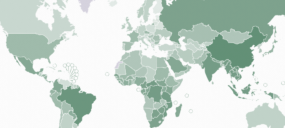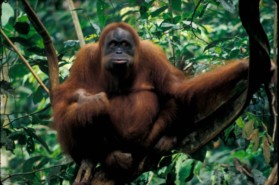Posted on 03 Mar 2018
Allocating a day in the year to coalesce people’s attention around a particular challenge faced by the global community often invites scepticism. What exactly is achieved by proclaiming a special day? After all, to remind is often not good enough – the real issue is whether we are doing enough.
So it is with World Wildlife Day, celebrated today.
At its 68th session, in December 2013, the UN General Assembly decided that 3 March each year should be designated World Wildlife Day, the purpose of which is both to celebrate and raise awareness of the world’s animals and plants. This date in the calendar was chosen because it was the day that the Convention on International Trade in Endangered Species of Wild Fauna and Flora (CITES) was signed in 1973.
This year’s theme is ‘Big cats: predators under threat’.
The term ‘big cats’ encompasses some of the earth’s most iconic species, such as tigers, leopards, snow leopards, jaguars, cheetahs, pumas and lions. Although several of these species are close to extinction, or have suffered drastic reductions in both their geographical and overall populations, bizarrely, they often fail to attract the attention they deserve and desperately need, compared to animals like the elephant and rhinoceros.
For example, tiger numbers are estimated to have fallen by at least 90 per cent over the course of the last century. Even though the tiger features in a myriad of myths, legends and literature, and its image is honoured by Hindus and Buddhists, the skin of this magnificent creature is nonetheless prized for decorative purposes, which led to its unsustainable hunting (both legal and through poaching) from the time of the British Raj in India until the present day. Another reason why the tiger has been poached almost to extinction is that almost every part of the animal – its bones, meat and even its whiskers – is sought after for use in traditional medicine.
The tiger’s rarity has meant that the bones of lions in Africa are now trafficked as an alternative. Meanwhile, in South America, jaguars are apparently being targeted so that their fangs may be smuggled to consumers in Asia. And some big cats, such as the cheetah, are illicitly traded alive, because people want to keep them as exotic pets.
The Global Initiative against Transnational Organized Crime has, since its launch, viewed environmental crime as one of its priorities. During the Global Initiative’s inauguration, it was observed that ‘if we win the war against environmental crime but discover that by the time we do so there are no tigers left, this will be a hollow victory’.
A 1999 report delivered to the CITES Standing Committee, describing the poaching of and illicit trade in tigers, noted: ‘Intelligence quoted to the [CITES Tiger Missions Technical Team] appeared to more than justify suspicions that organized criminal gangs, including the Russian mafia and Chinese triads may well be involved in wildlife crime. Although several enforcement agencies told the team of their concern over the existence of such organized trade and routes, little appears to have been done to research or infiltrate illicit criminal activity at that level.’
Since 2013, the Global Initiative has maintained its focus on environmental crime in all its forms, but especially trafficking in wildlife. To help tackle the illegal wildlife economy, it aims to plug some of the gaps identified through activities such as Wildlife Watch and TOCLaw Environment.
It is for this reason that the Global Initiative joins others working to end illicit trade in recalling today how much more must be done – and how close we are to losing the battle to save many of the big cat species. The Global Initiative remains determined to play its part in ensuring that, one day, there will be a sustainable future for the big cats of the earth, whether their skins be spotted or striped, and regardless of their colour.
Photo by Frida Bredesen on Unsplash



